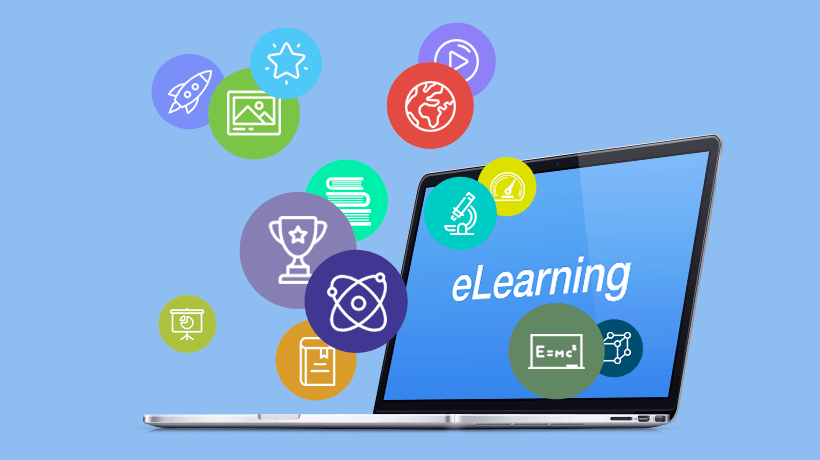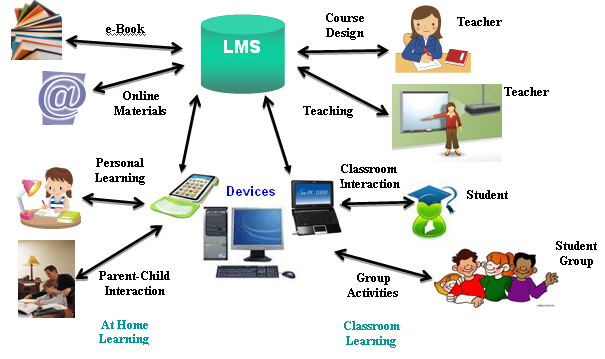Canvas Singapore: Redefining the Next Generation of Learning in Singapore
Canvas Singapore: Redefining the Next Generation of Learning in Singapore
Blog Article
Learning Monitoring Equipments: Enhance and Track Your Discovering Goals
In today's academic landscape, Understanding Management Solution (LMS) stand out as crucial instruments for boosting the effectiveness of finding out processes. The concern continues to be: what specific functions can an LMS deal to maximize your learning journey and ensure you fulfill your purposes?
What Is a Discovering Monitoring System?
A Learning Administration System (LMS) is normally a software program application designed to help with the management, paperwork, monitoring, and distribution of instructional courses or training programs. At its core, an LMS offers a centralized system where instructors and students can connect efficiently. This system streamlines the educational process by enabling trainers to produce and handle material, examine trainee performance, and communicate with learners.
LMS services come geared up with different functions, such as program registration, content management, and reporting tools (lms singapore). They sustain varied discovering styles, including e-learning, mixed knowing, and conventional classroom guideline. In addition, LMS systems can integrate multimedia aspects, such as video clips and interactive tests, enhancing the learning experience
The execution of an LMS can differ dramatically based upon the requirements of the organization, varying from local business to big universities. This flexibility makes LMS options appropriate for various contexts, including business training, professional growth, and academic education and learning. As modern technology proceeds to evolve, the role of LMS in cultivating efficient knowing environments continues to be progressively essential, giving both trainers and learners with the needed tools to attain their academic purposes.
Advantages of Utilizing an LMS
Utilizing an Understanding Administration System supplies various benefits that improve both training and discovering experiences. An LMS centralizes instructional resources, making it much easier for instructors to organize and provide web content to students. This structured access to products fosters an effective understanding environment where trainees can involve with coursework at their very own pace.
Furthermore, LMS systems frequently come furnished with analytics and reporting attributes, enabling instructors to track student progress and determine locations where people may need extra assistance. This data-driven strategy not just informs instruction however additionally enhances overall trainee results by promoting targeted interventions.
Moreover, the versatility of an LMS fits different finding out designs and choices, making it possible for the assimilation of multimedia sources that deal with varied pupil demands. This adaptability is particularly valuable in today's increasingly digital landscape.
Additionally, an LMS promotes collaboration through discussion forums and group activities, urging peer communication and communication. Such involvement boosts critical thinking and analytic abilities, essential parts of a versatile education. In general, the benefits of utilizing a Discovering Administration System substantially contribute to a more arranged, reliable, and efficient academic experience for both instructors and students.
Secret Functions to Look For
When selecting a Discovering Administration System (LMS), several key attributes can substantially impact the performance of the system. Most importantly, user-friendliness is important. An instinctive interface ensures that both students and administrators can browse the system easily, reducing training time and enhancing interaction.
Following, robust reporting and analytics capabilities are critical. These functions allow companies to track learner development, assess program effectiveness, and determine areas for enhancement. Detailed understandings facilitate educated decision-making and enhance the general learning experience.
In addition, scalability is an important consideration. The LMS needs to be able to accommodate a boosting variety of customers and content without compromising performance. This moved here versatility makes sure the system can expand along with the organization.
Assimilation with existing tools and systems is likewise essential. An LMS that seamlessly connects with various other software program, such as HR systems or content authoring tools, enhances workflow effectiveness and information consistency.
Finally, think about mobile compatibility. A mobile-friendly LMS allows students to gain access to materials anytime, anywhere, promoting a more flexible learning environment. lms singapore. By prioritizing these key features, companies can pick an LMS that properly fulfills their academic goals
Executing an LMS in Your Workflow
Selecting the right Understanding Monitoring System (LMS) is just the very first step; successful implementation within your operations is just as crucial. To guarantee a smooth transition, start by plainly defining your site web learning purposes and preferred end results. Entail vital stakeholders at an early stage to garner support and address possible worries.
Next, analyze existing procedures and identify just how the LMS can incorporate perfectly. This entails mapping out workflows, identifying which attributes of the LMS will certainly be used, and assigning duties for material creation, administration, more information and user accessibility. Offering adequate training for all individuals is important; take into consideration tailored sessions to attend to various skill levels and duties.

Lastly, keep open lines of communication throughout the implementation procedure. Regular check-ins with customers will help determine any obstacles and assist in ongoing assistance, guaranteeing that the LMS becomes an indispensable part of your understanding environment.
Best Practices for Objective Monitoring
To successfully track learning objectives within your LMS, it's important to develop clear metrics and criteria that straighten with your academic purposes. Begin by defining details, measurable, attainable, relevant, and time-bound (WISE) objectives for learners. This clearness will certainly enable both trainers and pupils to keep track of progression effectively.
Use the integrated analytics tools of your LMS to gather information on training course completion rates, analysis ratings, and engagement levels. Regularly evaluate these metrics to determine fads, areas for enhancement, and potential obstructions. Integrating developmental assessments throughout the knowing procedure can provide timely comments, permitting changes to be made in real-time.
In addition, encourage self-tracking among learners by offering them with tools such as progression charts or dashboards. This fosters responsibility and inspires them to take possession of their academic trip.
Last but not least, connect regularly with learners regarding their progress. Scheduled check-ins or feedback sessions can help strengthen goals and encourage dialogue about challenges faced. By implementing these best practices, organizations can ensure reliable objective monitoring, eventually improving the general knowing experience and outcomes within the LMS structure.

Conclusion
In recap, Knowing Administration Systems (LMS) serve as vital devices for improving educational experiences by centralizing sources and assisting in interaction between instructors and students. Eventually, an LMS is important for achieving scholastic goals and fostering a helpful discovering environment.
Report this page